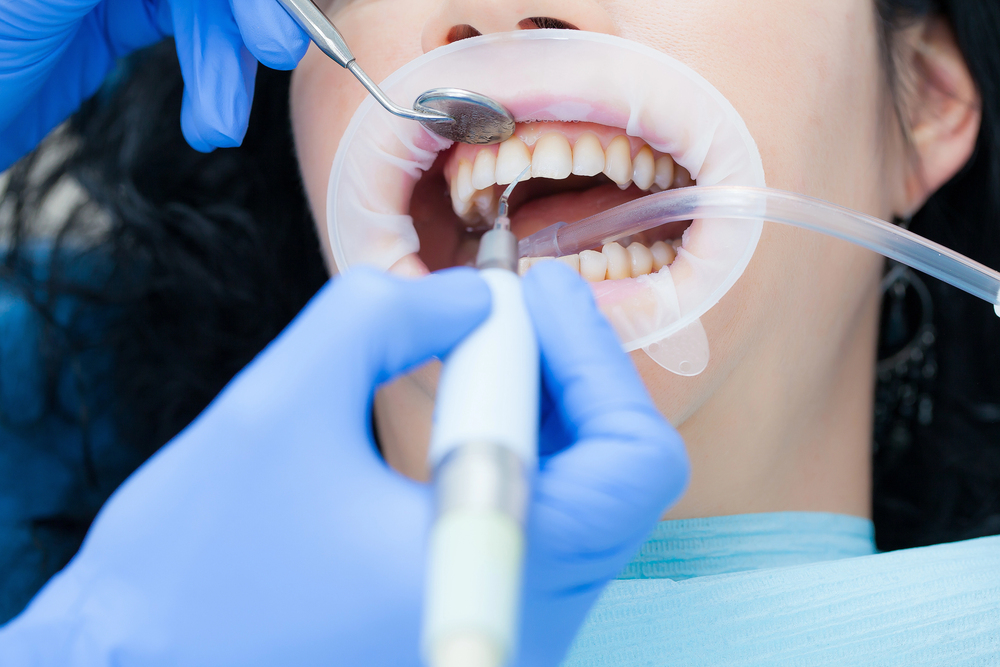Gum disease, also known as periodontal disease, affects millions of people worldwide and is one of the leading causes of tooth loss in adults. Characterized by inflammation of the gums, it often begins with mild irritation and can progress to more severe conditions like periodontitis if left untreated. The good news is that with proper periodontal treatment, many cases of gum disease can be effectively managed or even reversed, especially when caught early. This article will explore how non-surgical periodontal treatments can help reverse gum disease and restore oral health.
What Is Gum Disease?
Gum disease typically begins as gingivitis, a mild form of periodontal disease that causes redness, swelling, and bleeding of the gums. Gingivitis is usually a result of poor oral hygiene, which allows plaque—a sticky film of bacteria—to build up on the teeth and along the gumline. If not removed through brushing and flossing, this plaque hardens into tartar, leading to the more severe stage of gum disease: periodontitis.
Periodontitis occurs when the gums pull away from the teeth, forming pockets that can become infected. As the disease progresses, it can destroy the bone and connective tissue supporting the teeth, leading to tooth loss. Gum disease not only affects oral health but has been linked to systemic issues such as heart disease, diabetes, and respiratory problems.
Early Detection: Key to Reversing Gum Disease
The earlier gum disease is detected, the more likely it can be reversed or managed through non-surgical methods. Regular dental check-ups are essential for early detection, as gum disease may not cause significant discomfort in its initial stages. Dentists can use periodontal probing to measure the depth of gum pockets and assess the extent of inflammation, helping to diagnose the severity of the disease.
If diagnosed at the gingivitis stage, gum disease can often be reversed with improved oral hygiene and professional cleanings. However, even in cases where the disease has progressed to periodontitis, non-surgical periodontal treatments can be highly effective in managing the condition and preventing further damage.
Non-Surgical Periodontal Treatments
Non-surgical periodontal treatments focus on eliminating the infection, reducing inflammation, and restoring the health of oral cavities. These treatments are minimally invasive and can be used to control gum disease without the need for surgical intervention.
1. Scaling and Root Planing (Deep Cleaning)
One of the most common non-surgical treatments for gum disease is scaling and root planing, often referred to as deep cleaning. This procedure involves two steps:
– Scaling: During scaling, the dentist or hygienist removes plaque and tartar from the tooth surfaces, especially below the gumline, where bacteria accumulate. Special instruments are used to clean the deep pockets formed between the teeth and gums, eliminating the source of infection.
– Root Planing: After scaling, the root surfaces are smoothed (planed) to discourage bacteria from reattaching. Smoothing the roots also helps the gums reattach to the teeth, reducing pocket depth and promoting healing.
Scaling and root planing are highly effective at reducing inflammation and halting the progression of gum disease. It is typically performed under local anesthesia to ensure patient comfort. In most cases, multiple sessions may be required depending on the severity of the condition.
2. Antimicrobial Therapy
Antimicrobial therapy involves the use of antiseptic solutions, antibiotics, or antimicrobial agents to target the bacteria responsible for gum disease. These treatments are often used in conjunction with scaling and root planing to enhance the effectiveness of periodontal treatment.
– Antibiotic gels or mouth rinses: Dentists may prescribe medicated mouth rinses or apply antibiotic gels directly into the gum pockets to control bacterial growth.
– Local Antibiotic Delivery: In some cases, antibiotics can be placed directly into the gum pockets after scaling and root planing. These antibiotics are slowly released over time, providing a sustained antibacterial effect.
Antimicrobial therapy helps to reduce the bacterial load in oral cavities and promote healing. It can be especially beneficial for patients with moderate to advanced periodontitis who require more targeted bacterial control.
3. Laser Therapy
Laser therapy is a newer, minimally invasive treatment for gum disease. In this procedure, a specialized dental laser is used to remove inflamed gum tissue and bacteria from the pockets around the teeth. The laser also helps to sterilize the area, promoting faster healing and reducing discomfort compared to traditional methods.
Laser therapy can be an effective adjunct to scaling and root planing or used as a standalone treatment for mild to moderate periodontitis. Because the laser is precise, it causes less damage to healthy tissues, resulting in a quicker recovery time.
4. Perio Protect Trays
Perio Protect trays are custom-fitted trays designed to deliver antimicrobial medication directly to the gum pockets. Patients wear the trays for a few minutes each day as part of their home care routine. This non-invasive treatment helps to reduce bacterial levels in the gums and support ongoing periodontal health.
Perio Protect trays are particularly useful for patients who have undergone scaling and root planing but need continued bacterial control to maintain the results.
Importance of Maintenance and Oral Hygiene
While non-surgical treatments are highly effective in reversing gum disease, maintaining the results requires a commitment to ongoing care. Patients who have undergone periodontal treatment must adopt a rigorous oral hygiene routine that includes brushing twice a day, flossing daily, and using antimicrobial mouthwash as recommended by their dentist.
Regular dental check-ups and cleanings are also essential for preventing the recurrence of gum disease. For patients who have had periodontitis, more frequent professional cleanings, known as periodontal maintenance, may be required to keep oral cavities healthy.
Reversing gum disease without surgery is possible with early detection and the right periodontal treatment. Non-surgical methods like scaling and root planing, antimicrobial therapy, laser treatment, and Perio Protect trays can effectively manage gum disease and promote healing. By taking proactive steps to maintain oral hygiene and seeking regular dental care, individuals can protect their gums and prevent the progression of periodontal disease, preserving their oral health for the long term.











